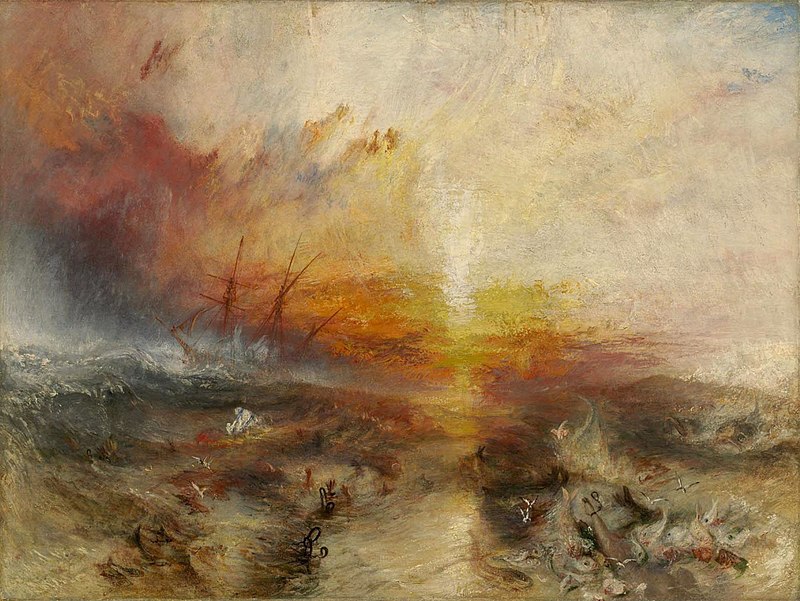
"until we are all free we are all slaves"
The Zong massacre was the mass killing of 133 African slaves by the crew of the British slave ship Zong in the days following 29 November 1781. The Gregson slave-trading syndicate, based in Liverpool, owned the ship and sailed her in the Atlantic slave trade. As was common business practice, they had taken out insurance on the lives of the slaves as cargo. When the ship ran low on potable water following navigational mistakes, the crew threw slaves overboard into the sea to drown, partly in order to ensure the survival of the rest of the ship's passengers, and in part to cash in on the insurance on the slaves, thus not losing money on the slaves who would have died from the lack of drinking water.
After the slave ship reached port at Black River, Jamaica, Zong's owners made a claim to their insurers for the loss of the slaves. When the insurers refused to pay, the resulting court cases (Gregson v Gilbert (1783) 3 Doug. KB 232) held that in some circumstances, the deliberate killing of slaves was legal and that insurers could be required to pay for the slaves' deaths. The judge, Lord Chief Justice, the Earl of Mansfield, ruled against the syndicate owners in this case, due to new evidence being introduced suggesting the captain and crew were at fault.
Following the first trial, freed slave Olaudah Equiano brought news of the massacre to the attention of the anti-slavery campaigner Granville Sharp, who worked unsuccessfully to have the ship's crew prosecuted for murder. Because of the legal dispute, reports of the massacre received increased publicity, stimulating the abolitionist movement in the late 18th and early 19th centuries; the Zong events were increasingly cited as a powerful symbol of the horrors of the Middle Passage of slaves to the New World.
The non-denominational Society for Effecting the Abolition of the Slave Trade was founded in 1787. The next year Parliament passed the first law regulating the slave trade, to limit the number of slaves per ship. Then in 1791, Parliament prohibited insurance companies from reimbursing ship owners in cases in which slaves were thrown overboard. The massacre has also inspired works of art and literature. It was commemorated in London in 2007, among events to mark the bicentenary of the British Slave Trade Act 1807, which abolished the African slave trade. A monument to the killed slaves on Zong was installed at Black River, Jamaica, their intended port.
Zong was originally named Zorg (meaning "Care" in Dutch) by its owners, the Middelburgsche Commercie Compagnie. It operated as a slave ship based in Middelburg, Netherlands, and made a voyage in 1777, delivering slaves to the coast of Suriname, South America. Zong was a "square stern ship" of 110 tons burthen. It was captured by the British 16-gun brig HMS Alert on 10 February 1781. By 26 February, Alert and Zong arrived at Cape Coast Castle, in what is present-day Ghana, which was maintained and staffed, along with other forts and castles, by the Royal African Company (RAC). The Castle was used as the regional headquarters of the RAC.
In early March 1781, Zong was purchased by the master of William, on behalf of a syndicate of Liverpool merchants. The members of the syndicate were Edward Wilson, George Case, James Aspinall and William, James and John Gregson. William Gregson had an interest in 50 slaving voyages between 1747 and 1780. He served as mayor of Liverpool in 1762. By the end of his life, vessels in which Gregson had a financial stake had carried 58,201 Africans to slavery in the Americas.
Zong was paid for with bills of exchange, and the 244 slaves already on board were part of the transaction.[7] The ship was not insured until after it started its voyage.[11] The insurers, a syndicate from Liverpool, underwrote the ship and slaves for up to £8,000, approximately half the slaves' potential market value. The remaining risk was borne by the owners.
Crew
Zong was the first command of Luke Collingwood, formerly the surgeon on the William. While Collingwood lacked experience in navigation and command, ship's surgeons were typically involved in selecting slaves for purchase in Africa, so their medical expertise supported the determination of "commodity value" for a captive. If the surgeon rejected a captive, that individual suffered "commercial death", being of no value, and was liable to be killed by African handlers. Sometimes these killings happened in the presence of the surgeon. It is likely that Collingwood had already witnessed the mass-killing of slaves. As the historian Jeremy Krikler commented, this may have prepared him psychologically to condone the massacre that took place on the Zong. Zong's first mate was James Kelsall, who had also served on the William.
The vessel's only passenger, Robert Stubbs, was a former captain of slave ships. In early 1780 he was appointed by the African Committee of the Royal African Company, as the governor of Anomabu, a British fortification near Cape Coast Castle in Ghana. This position made him also vice-president of the RAC Council of the Castle. Due to his ineptitude and enmity incurred with John Roberts, governor of the Castle, Stubbs was forced out of the governorship of Anomabu by the RAC Council after nine months. Witness statements gathered by the African Committee of the RAC, accused him of being a semi-literate drunkard who mismanaged the slave-trading activities of the fort. Stubbs was aboard to return to Britain; Collingwood may have thought his earlier experience on slave ships would be useful.
Zong had a 17-man crew when it left Africa, which was far too small to maintain adequate sanitary conditions on the ship. Mariners willing to risk disease and slave rebellions on slave ships were difficult to recruit within Britain and were harder to find for a vessel captured from the Dutch off the coast of Africa. Zong was manned with remnants of the previous Dutch crew, the crew of William, and with unemployed sailors hired from the settlements along the African coast.
The Middle Passage
When Zong sailed from Accra with 442 slaves on 18 August 1781, it had taken on more than twice the number of people that it could safely transport. In the 1780s, British-built ships typically carried 1.75 slaves per ton of the ship's capacity; on the Zong, the ratio was 4.0 per ton. A British slave ship of the period would carry around 193 slaves and it was extremely unusual for a ship of Zong's relatively small size to carry so many.
After taking on drinking water at São Tomé, Zong began its voyage across the Atlantic Ocean to Jamaica on 6 September. On 18 or 19 November, the ship neared Tobago in the Caribbean but failed to stop there to replenish its water supplies.
It is unclear who, if anyone, was in charge of the ship at this point, as Luke Collingwood had been gravely ill for some time. The man who would normally have replaced him, first mate James Kelsall, had been previously suspended from duty following an argument on 14 November. Robert Stubbs had captained a slave ship several decades earlier and he temporarily commanded Zong during Collingwood's incapacitation, but he was not a registered member of the vessel's crew. According to historian James Walvin, the breakdown of the command structure on the ship might explain the subsequent navigational errors and the absence of checks on supplies of drinking water.
Massacre
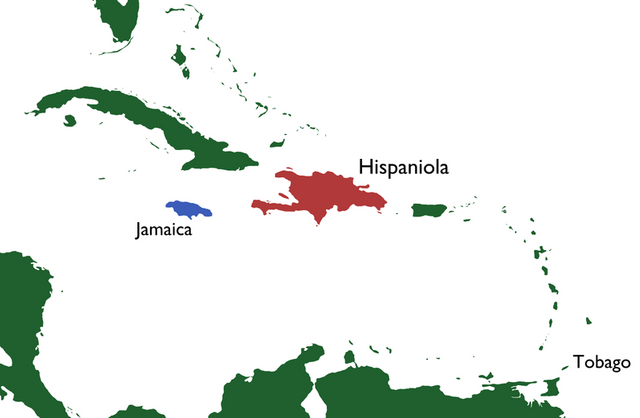
Map of the Caribbean, showing Tobago, Hispaniola and Jamaica
Map of the Caribbean, showing Tobago, Hispaniola (red) and Jamaica (blue)
On 27 or 28 November, the crew sighted Jamaica at a distance of 27 nautical miles (50 km; 31 mi) but misidentified it as the French colony of Saint-Domingue on the island of Hispaniola. Zong continued on its westward course, leaving Jamaica behind. This mistake was recognised only after the ship was 300 miles (480 km) leeward of the island. Overcrowding, malnutrition, accidents, and disease had already killed several mariners and approximately 62 Africans. James Kelsall later claimed that there was only four days' water remaining on the ship, when the navigational error was discovered and Jamaica was still 10–13 sailing days away.
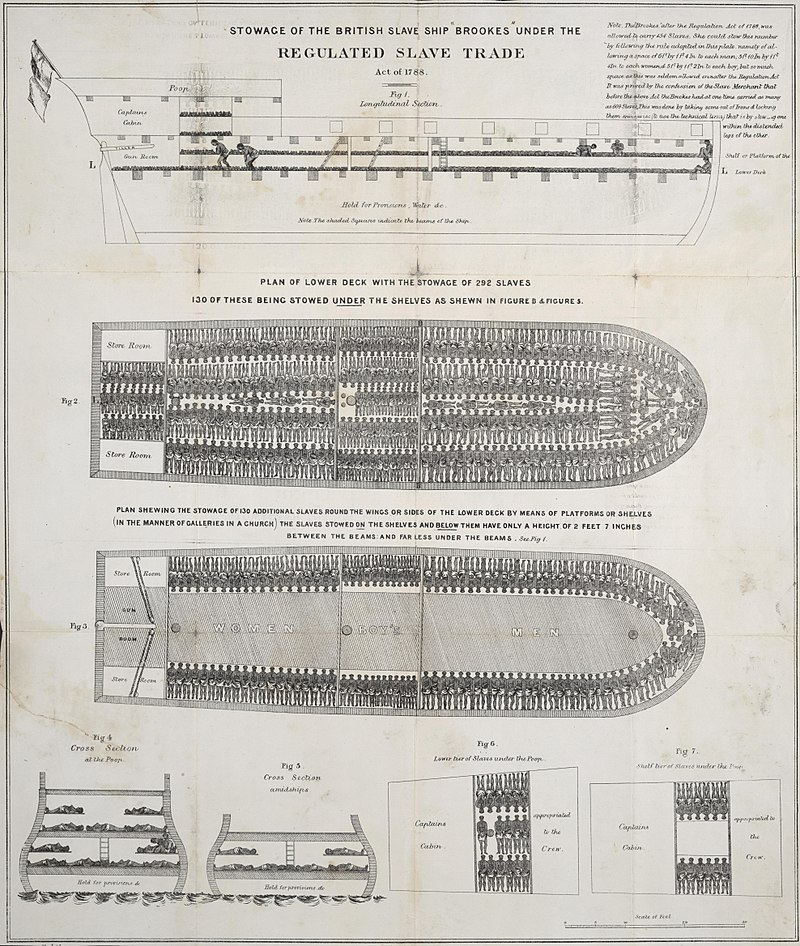
A plan of the slave ship Brookes, showing the extreme overcrowding experienced by slaves on the Middle Passage Plan of the slave ship Brookes, carrying 454 slaves. Before the Slave Trade Act 1788, Brookes had transported 609 slaves and was 267 tons burden, making 2.3 slaves per ton. Zong carried 442 slaves and was 110 tons burden—4.0 slaves per ton.
If the slaves died onshore, the Liverpool ship-owners would have had no redress from their insurers. Similarly, if the slaves died a "natural death" (as the contemporary term put it) at sea, then insurance could not be claimed. If some slaves were jettisoned in order to save the rest of the "cargo" or the ship, then a claim could be made under "general average". ( This principle holds that a captain who jettisons part of his cargo in order to save the rest can claim for the loss from his insurers.) The ship's insurance covered the loss of slaves at £30 a head.
On 29 November, the crew assembled to consider the proposal that some of the slaves should be thrown overboard. James Kelsall later claimed that he had disagreed with the plan at first but it was soon unanimously agreed. On 29 November, 54 women and children were thrown through cabin windows into the sea. On 1 December, 42 male slaves were thrown overboard, and 36 more followed in the next few days. Another ten, in a display of defiance at the inhumanity of the slavers, jumped into the sea. Having heard the shrieks of the victims as they were thrown into the water, one slave requested that the remaining Africans be denied all food and drink rather than be thrown into the sea. The crew ignored this request. In total, 142 Africans were killed by the time the ship reached the Caribbean. The account of the King's Bench trial reports that one slave managed to climb back onto the ship.
The crew claimed that the slaves had been jettisoned because the ship did not have enough water to keep all the slaves alive for the rest of the voyage. This claim was later disputed, as the ship had 420 imperial gallons (1,900 l) of water left when it arrived in Jamaica on 22 December. An affidavit later made by Kelsall, stated that on 1 December, when 42 slaves were killed, it rained heavily for more than a day, allowing six casks of water (sufficient for eleven days) to be collected.
Arrival at Jamaica
On 22 December 1781, Zong arrived at Black River, Jamaica, with 208 slaves on board, less than half the number taken from Africa. These sold for an average price of £36 each. The Jamaican Vice-Admiralty court upheld the legality of the British capture of Zong from the Dutch, and the syndicate renamed the ship Richard of Jamaica.Luke Collingwood died three days after Zong reached Jamaica, two years before the 1783 court proceedings about the case.
Legal proceedings
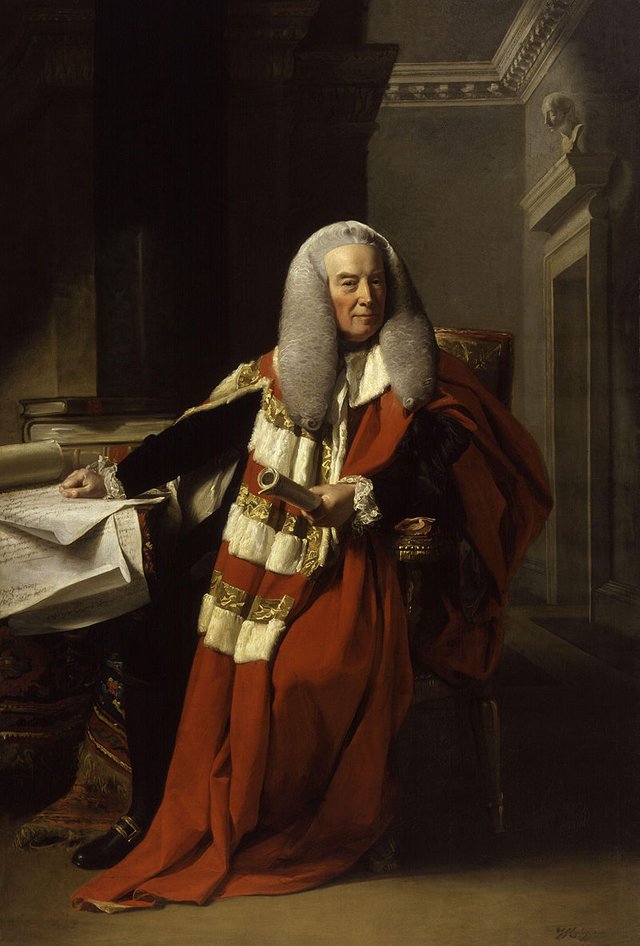
Portrait of William Murray, 1st Earl of Mansfield, wearing his parliamentary robes
William Murray, 1st Earl of Mansfield in his parliamentary robes as an Earl
When the news of Zong's voyage reached Britain, the ship's owners claimed compensation from their insurers for the loss of the slaves. The insurers refused to honour the claim and the owners took them to court. Zong's logbook went missing after the ship reached Jamaica, two years before the hearings started. The legal proceedings provide almost all the documentary evidence about the massacre but there is no formal record of the first trial other than what is referred to in the appeals hearing. The ship's insurers claimed that the log had been deliberately destroyed, which the Gregson syndicate denied.
Almost all the surviving source material is of questionable reliability. The two witnesses who gave evidence, Robert Stubbs and James Kelsall, were strongly motivated to exonerate themselves from blame.[note 2] It is possible that the figures concerning the number of slaves killed, the amount of water that remained on the ship, and the distance beyond Jamaica that Zong had mistakenly sailed are inaccurate.
First trial
Legal proceedings began when the insurers refused to compensate the owners of Zong. The dispute was initially tried at the Guildhall in London on 6 March 1783, with the Lord Chief Justice, the Earl of Mansfield, overseeing the trial before a jury. Mansfield was previously the judge in Somersett's Case in 1772, which concerned the legality of keeping slaves in Britain. He had ruled that slavery had never been established by statute in Britain and was not supported by common law.
Robert Stubbs was the only witness in the first Zong trial and the jury found in favour of the owners, under an established protocol in maritime insurance that considered slaves as cargo. On 19 March 1783, Olaudah Equiano, a freed slave, told the anti-slave-trade activist Granville Sharp of the events aboard Zong and a newspaper soon carried a lengthy account, reporting that the captain had ordered the slaves killed in three batches. Sharp sought legal advice the next day, about the possibility of prosecuting the crew for murder.
King's Bench appeal
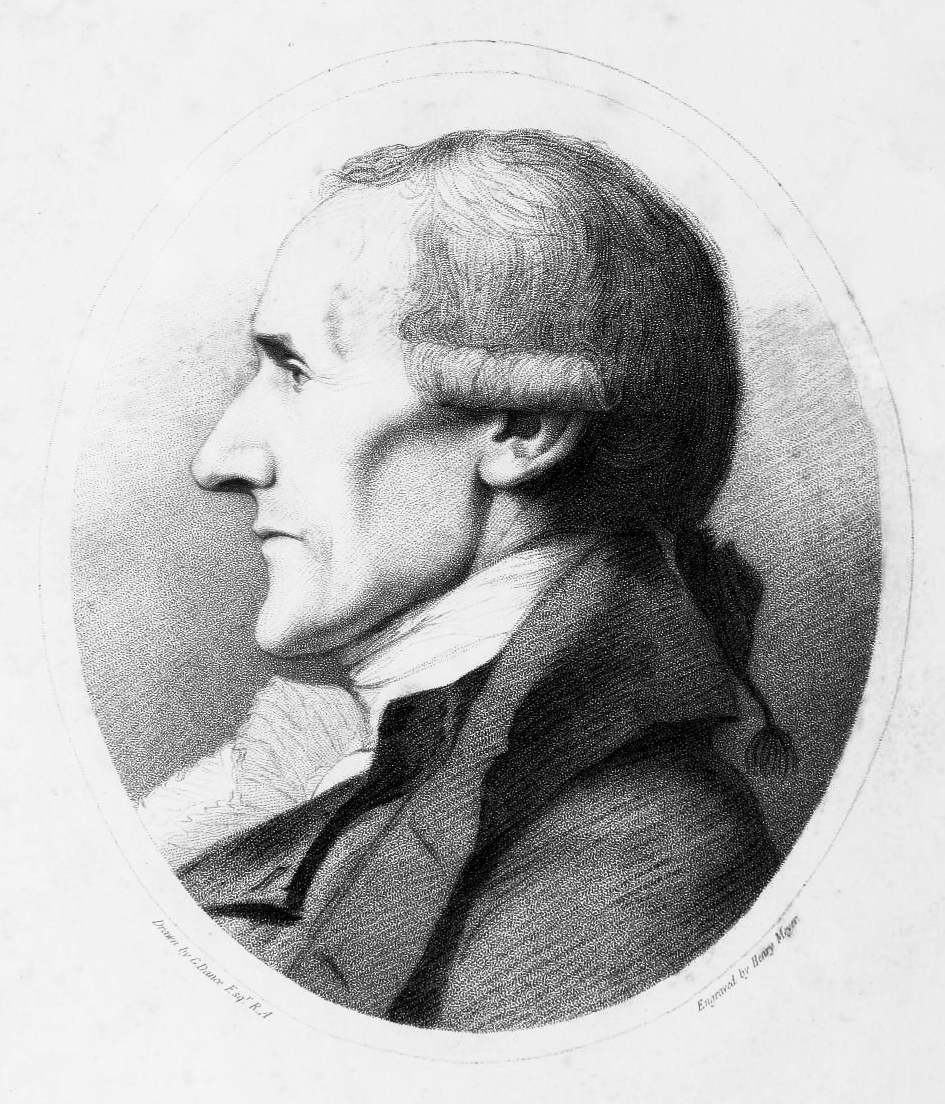
Portrait of Granville Sharp. The head and shoulders of Sharp are seen from the side, in an oval frame
Granville Sharp, from a drawing by George Dance
The insurers applied to the Earl of Mansfield to have the previous verdict set aside and for the case to be tried again. A hearing was held at the Court of King's Bench in Westminster Hall from 21–22 May 1783, before Mansfield and two other King's Bench judges, Mr Justice Buller and Mr Justice Willes. The Solicitor General, John Lee, appeared on behalf of the Zong's owners, as he had done previously in the Guildhall trial. Granville Sharp was also in attendance, together with a secretary he had hired to take a written record of the proceedings.
Summing up the verdict reached in the first trial, Mansfield said that the jury,
had no doubt (though it shocks one very much) that the Case of Slaves was the same as if Horses had been thrown over board ... The Question was, whether there was not an Absolute Necessity for throwing them over board to save the rest, [and] the Jury were of opinion there was ...
Collingwood had died in 1781 and the only witness of the massacre to appear at Westminster Hall was passenger Robert Stubbs, although a written affidavit by first mate James Kelsall was made available to the lawyers.Stubbs claimed that there was "an absolute Necessity for throwing over the Negroes", because the crew feared all the slaves would die if they did not throw some into the sea. The insurers argued that Collingwood had made "a Blunder and Mistake" in sailing beyond Jamaica and that the slaves had been killed so their owners could claim compensation. They alleged that Collingwood did this because he did not want his first voyage as a slave ship captain to be unprofitable.
John Lee responded by saying that the slaves "perished just as a Cargo of Goods perished" and were jettisoned for the greater good of the ship. The insurers' legal team replied that Lee's argument could never justify the killing of innocent people; each of the three addressed issues of humanity in the treatment of the slaves and said that the actions of Zong's crew were nothing less than murder. As historian James Walvin has argued, it is possible that Granville Sharp directly influenced the strategy of the insurers' legal team.
At the hearing, new evidence was heard, that heavy rain had fallen on the ship on the second day of the killings, but a third batch of slaves was killed after that. This led Mansfield to order another trial, because the rainfall meant that the killing of those slaves, after the water shortage had been eased, could not be justified in terms of the greater necessity of saving the ship and the rest of its human cargo. One of the justices in attendance also said that this evidence invalidated the findings of the jury in the first trial, as the jury had heard testimony that the water shortage resulted from the poor condition of the ship, brought on by unforeseen maritime conditions, rather than from errors committed by its captain. Mansfield concluded that the insurers were not liable for losses resulting from errors committed by Zong's crew.
There is no evidence that another trial was held on this issue. Despite Granville Sharp's efforts, no member of the crew was prosecuted for murder of the slaves. Yet, the Zong case did eventually gain both national and international attention. A summary of the appeal on the Zong case, was eventually published in the nominate reports prepared from the contemporaneous manuscript notes of Sylvester Douglas, Baron Glenbervie, and others. It was published in 1831 as Gregson v Gilbert (1783) 3 Doug. KB 232.
Mansfield's motivations
Jeremy Krikler has argued that Mansfield wanted to ensure that commercial law remained as helpful to Britain's overseas trade as possible and as a consequence was keen to uphold the principle of "general average", even in relation to the killing of humans. For Mansfield to have found in favour of the insurers would have greatly undermined this idea. The revelation that rain had fallen during the period of the killings enabled Mansfield to order a retrial, while leaving the notion of "general average" intact. He emphasised that the massacre would have been legally justified and the owners' insurance claim would have been valid, if the water shortage had not arisen from mistakes made by the captain.
Krikler comments that Mansfield's conclusions ignored the ruling precedent of his predecessor, Matthew Hale, that the killing of innocents in the name of self-preservation was unlawful. This ruling was to prove important a century later in R v Dudley and Stephens, which also concerned the justifiability of acts of murder at sea. Mansfield also failed to acknowledge another important legal principle—that no insurance claim can be legal if it arose from an illegal act.
Effect on the abolitionist movement
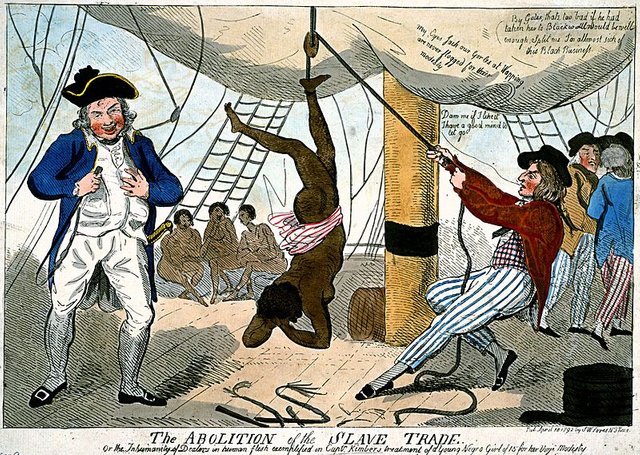
A cartoon image of the crew of a slave ship lashing a female slave. The ship's captain is standing on the left, holding a whip. Sailors are standing on the right. In the centre, a female slave is hanging from a pulley by her ankle. Other naked slaves are in the background.
Depiction of the torture of a female slave by Captain John Kimber, produced in 1792. Unlike the crew of Zong, Kimber was tried for the murder of two female slaves. The trial generated substantial news coverage in addition to printed images such as this—unlike the limited reporting of the Zong killings a decade earlier.
Granville Sharp campaigned to raise awareness of the massacre, writing letters to newspapers, the Lords Commissioners of Admiralty and the Prime Minister (the Duke of Portland). Neither Portland nor the Admiralty sent him a reply. Only a single London newspaper reported the first Zong trial in March 1783, but it provided details of events. The newspaper article in March 1783 was the first public report of the massacre, and it was published nearly 18 months after the event. Little else about the massacre appeared in print before 1787.
Despite these setbacks, Sharp's efforts did have some success. In April 1783, he sent an account of the massacre to William Dillwyn, a Quaker, who had asked to see evidence that was critical of the slave trade. The London Yearly Meeting of the Society of Friends decided shortly after to begin campaigning against slavery, and a petition signed by 273 Quakers was submitted to parliament in July 1783. Sharp also sent letters to Anglican bishops and clergy and to those already sympathetic to the abolitionist cause.
The immediate effect of the Zong massacre on public opinion was limited, demonstrating—as the historian of abolitionism Seymour Drescher has noted—the challenge that the early abolitionists faced. Following Sharp's efforts, the Zong massacre became an important topic in abolitionist literature and the massacre was discussed in works by Thomas Clarkson, Ottobah Cugoano, James Ramsay and John Newton.These accounts often omitted the names of the ship and its captain, thereby creating, in the words of Srividhya Swaminathan, "a portrait of abuse that could be mapped onto any ship in the Middle Passage".
The Zong killings offered a powerful example of the horrors of the slave trade, stimulating the development of the abolitionist movement in Britain, which dramatically expanded in size and influence in the late 1780s. In 1787, the Society for the Abolition of the Slave Trade was founded.
Parliament received numerous petitions against the slave trade and examined the issue in 1788. With strong support by Sir William Dolben, who had toured a slave ship, it passed the Slave Trade Act 1788 (Dolben's Act), which was its first legislation to regulate the slave trade. It restricted the number of slaves that could be transported, to reduce problems of overcrowding and poor sanitation. Its renewal in 1794 included an amendment that limited the scope of insurance policies concerning slaves,rendering illegal such generalised phrases that promised to insure against "all other Perils, Losses, and Misfortunes." (The Zong owners' representatives had highlighted such a phrase in seeking their claim at the King's Bench hearing.)[86] The act had to be renewed annually and Dolben led these efforts, speaking frequently to parliament in opposition to slavery. The Slave Trade Act of 1799 was passed to make these provisions permanent.
Abolitionists, notably William Wilberforce, continued their effort to end the slave trade. Britain passed the Slave Trade Act 1807, which prohibited the Atlantic slave trade, and the Royal Navy enforced the Blockade of Africa. The United States also prohibited the Atlantic slave trade in 1808 and helped intercept illegal slave ships at sea, predominately after 1842.
In 1823, the Anti-Slavery Society was founded in Britain, dedicated to abolishing slavery throughout the British Empire; the Slavery Abolition Act 1833 represented the achievement of their goal. The Zong massacre was frequently cited in abolitionist literature in the 19th century; in 1839, Thomas Clarkson published his History of the Rise, Progress, and Accomplishment of the Abolition of the African Slave Trade, which included an account of killings.
Clarkson's book had an important influence on the artist J. M. W. Turner, who displayed a painting at the Royal Academy summer exhibition in 1840 entitled The Slave Ship. The painting depicts a vessel from which a number of manacled slaves have been thrown into the sea, to be devoured by sharks. Some of the details in the painting, such as the shackles worn by the slaves, appear to have been influenced by the illustrations in Clarkson's book. The painting was shown at an important time in the movement to abolish slavery worldwide, as the Royal Academy exhibition opened one month before the first World Anti-Slavery Convention in London. The painting was admired by its owner, John Ruskin. It has been described by the 20th-century critic Marcus Wood as one of the few truly great depictions in Western art of the Atlantic slave trade.
Representations in modern culture
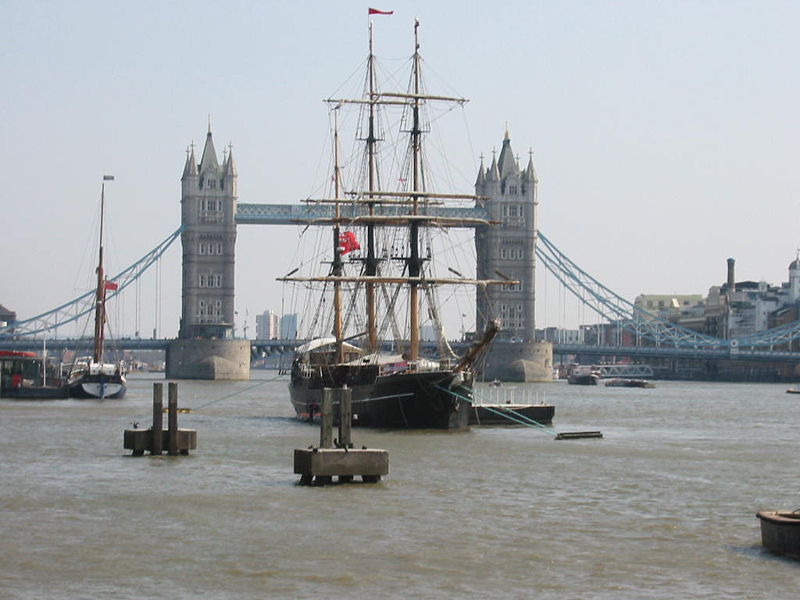
A sailing ship sits moored on the River Thames, with a large bridge in the background
Kaskelot, appearing as Zong, at Tower Bridge during commemoration of the 200th anniversary of the abolition of the slave trade in 2007
The Zong massacre has inspired several works of literature. Fred D'Aguiar's novel Feeding the Ghosts (1997) tells the story of an African who survives being thrown overboard from the Zong. In the novel, the journal of the slave—Mintah—is lost, unlike that of Granville Sharp. According to the cultural historian Anita Rupprecht, this signifies the silencing of African voices about the massacre.
M. NourbeSe Philip's 2008 book of poems, Zong!, is based on the events surrounding the massacre and uses the account of the King's Bench hearing as its primary material. Philip's text physically deconstructs the account as a method for undermining the document's authority.
Margaret Busby's play An African Cargo, staged by Nitro theatre company at Greenwich Theatre in 2007, dealt with the massacre and the 1783 trials, making use of the legal transcripts.
An episode of the television programme Garrow's Law (2010) is loosely based on the legal events arising from the massacre. The historical William Garrow did not take part in the case, and because the Zong's captain died shortly after arriving in Jamaica, his appearance in court for fraud is also fictional.
2007 abolition commemorations
In 2007, a memorial stone was erected at Black River, Jamaica, near where Zong would have landed.A sailing ship representing Zong was sailed to Tower Bridge in London in March 2007 to commemorate the 200th anniversary of the Act for the Abolition of the Slave Trade, at a cost of £300,000. The vessel housed depictions of the Zong massacre and the slave trade. It was accompanied by HMS Northumberland, with an exhibition on board commemorating the role of the Royal Navy after 1807 in the suppression of the slave trade.
Hello,
Not indicating that the content you post including translations, spun, or re-written articles are not your original work could be seen as plagiarism.
These are some tips on how to share content and add value:
Repeated plagiarized posts are considered spam. Spam is discouraged by the community, and may result in action from the cheetah bot.
If you are actually the original author, please do reply to let us know!
Thank You!
More Info: Abuse Guide - 2017.
Downvoting a post can decrease pending rewards and make it less visible. Common reasons:
Submit
Hi! I am a robot. I just upvoted you! I found similar content that readers might be interested in:
http://military.wikia.com/wiki/Zong_massacre
Downvoting a post can decrease pending rewards and make it less visible. Common reasons:
Submit